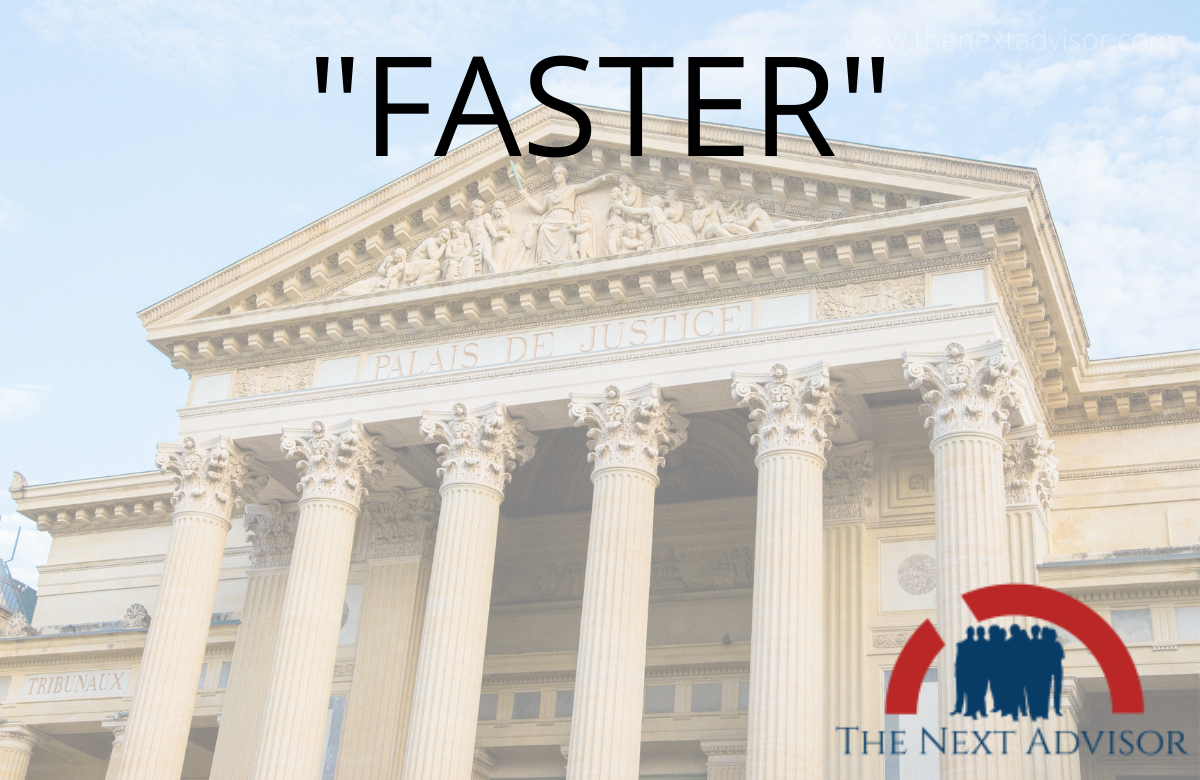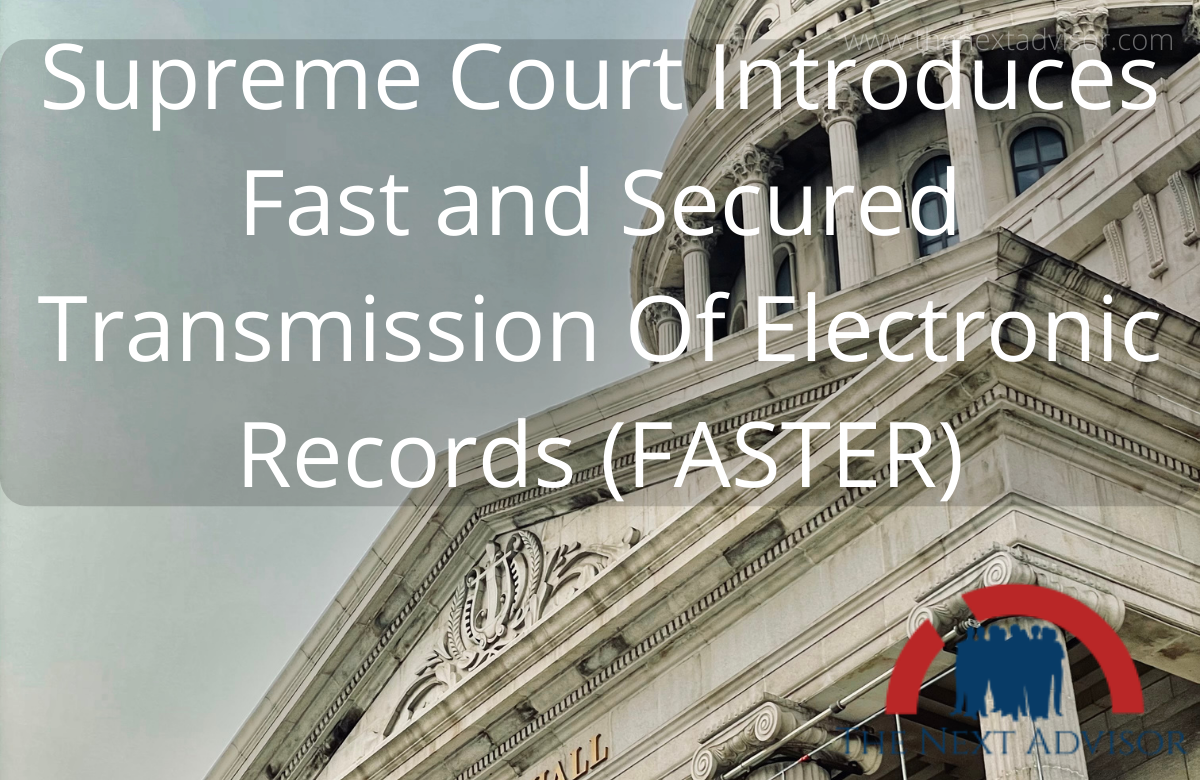Supreme Court’s Faster System Means Supreme Court Introduces Fast and Secured Transmission of Electronic Records (FASTER) System. Supreme Court’s FASTER System is very necessary to make smooth to the fast and secure transmission of an electronic record. Supreme Court looking for pigeons to communicate therefore Supreme Court plans electronic channel to send order
FASTER- Fast And Secure Transmission of Electronic Record
Re: Delay in the release of convicts after granting of bail.
-
In a big fillip to the fundamental rights of life, dignity, and personal liberty, the Supreme Court has introduced a new system by which it is crucial decisions, including orders on bail and stay of arrest,
-
Can be communicated electronically to prison authorities and investigating agencies through a secure channel.
-
It is proposed that the e-authenticated copies of the record of proceedings/orders, digitally signed by the authorized officer may be transmitted through the FASTER (Fast and Secured Transmission of Electronic Records) system to the duty – holders of the justice system, Supreme Court’s Faster systmem can not be hacked, it is very safe.
-
The Supreme Court announced a plan to set up a system for swift and secure electronic transmission of its rulings to jail authorities so that prisoners who have been granted relief are not left waiting for a certified order copy in order to be released.
-
“In this age of information and communication technology, we are still looking at the skies for the pigeons to communicate the orders,” Chief Justice N.V.Ramana said.
-
Another incident was the inexplicably delay on the part of the Indore Central Jail authorities to release stand-up comedian Munawar Faruqui following the grant of bail by the Supreme Court.
-
Again, Pinjra Tod activists Devngana Kalita and Natasha Narwal and Jamia Millia Islamia student Asif Iqbal Tanha walked out of the Tihar Jail nearly two days after the Delhi High Court granted them bail.
-
Chief Justice of the Supreme Court of India N.V.Ramana announced a scheme called “FASTER” or ‘Fast and Secure Transmission of Electronic Records’.
-
By which the Supreme Court would instantly directly, securely, and electronically transit bail and other orders to jail authorities, District Courts, and High Courts.
Courts gave bail but there is a delay to release of the prisoner who got bail. Because the order copy could not reach to Jailer therefor after getting bail also that person or prisoner doesn’t release from jail because of delay in reaching the bail order to Jailer. Therefore Supreme Court Introduces the FASTER System(Supreme Court’s Faster System)
Why is the need felt for Electronic Records?
-
Prison authorities insist on receiving by hand the “authentic” hard copy of the bail order regardless of the fact that the personal liberty of people suffers.
-
Increase in the number of reports regarding the delay in implementation of the orders passed by the top Court.
-
The recent delay by Uttar Pradesh authorities in releasing 13 prisoners who were granted bail by it on July 8, 2021, compelled the judiciary to take Suo Motu cognizance. The convicts, who were juveniles at the time of offence were lodged in Agra Central Jail for periods ranging from around 14 to 22 years in a murder case.
-
Some accused have been attempting to fudge Court orders
-
Prison authorities insist on receiving by hand the “authentic” hard copy of the bail order regardless of the fact that the personal liberty of people suffers.

“FASTER”
Aim of FASTER: the aim of the Supreme Court’s FASTER System:
-
To save time and effort and to ensure that there are no delays in implementation of the orders passed by the Supreme Court.
-
To prevent injustice .” Justice delayed is justice denied”.About the Scheme: The innovative scheme is conceived for delivery of orders to concerned prisons, District Courts, High Courts, as the case may be, for instantaneous delivery of orders passed by Apex Court through a secure communication channel.
-
It is meant to communicate all orders to concerned hail authorities without waiting.
Observation by the CJI:
-
Directed to all the states to respond on availability of internet connection in jails across the nation as without this facility transmission of such orders to prisons will not be possible
-
The scheme will be formulated by the Secretary-General of the Supreme Court with the cooperation of the Solicitor General.
To Decongest Prisons:-
-
The apex court has made concerted moves in recent months to decongest prisons amid the COVID-19 pandemic.
-
In May a Bench led by the CJI ordered the police to limit arrests during the pandemic to prevent overcrowding of Jails and urged courts to not order detention in a mechanical manner.
Earlier Efforts For Digitization Of Judiciary:
-
-
Technological Interventions in the form of e-courts are being established to address the issue of pendency and other problems. Despite some hiccups due to the COVID-19 pandemic, the Supreme Court and High Courts have been able to function online.
-
360- Degree Profiling: Phase III of the e-Courts Project envisages creating a 360- Degree profile of each person by integrating all of their interactions with government agencies into a unified database.
-
Through this data can be exchanged between various branches of the State, such as between the judiciary, the Police, and prison systems through the interoperable Criminal Justice System (ICJS)
-
.

























